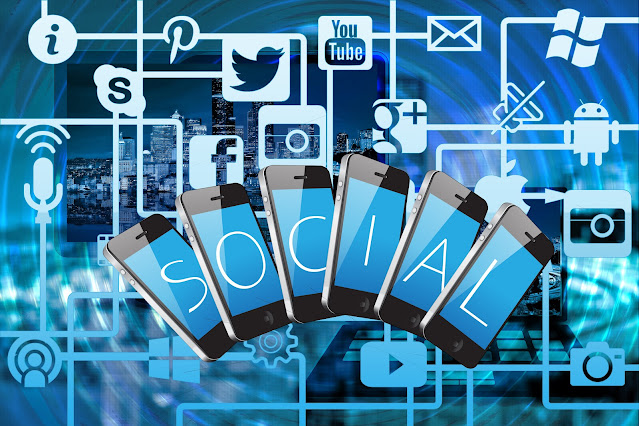By Ibrahim Abdulsalam
Hello, welcome to Ahmadu Bello University Campus Press. A
club that touches all aspects of mass communication practice.
I am Ibrahim Abdul Salam, a computer technician, content
creator, front-end web designer, blog manager, and currently a student of the
great citadel of learning, Ahmadu Bello University Zaria.
My contents here will be succinct, precise, and entertaining
on social media, the internet, and technology in general. So, if you are an internet
user, social media user, content creator, or perhaps a technology enthusiast,
this is one of the best spaces for you to explore your interest.
In essence, I will be taking you through different phases in
learning about the digital world to empower yourself and uplift your community.
This week, I will be introducing social media to you as a
novice, an amateur, and at the same time an expert. That surprises you right?
Yes! I said that. Read on.
Nowadays, more than a billion people use applications such
as Facebook, Twitter, LinkedIn, and Instagram as their primary means to connect
with friends, relatives, and increasingly, businesses. Of course, these are all
social media and they are popular because they facilitate the practice of
social networking and is based on the premise that people are profoundly
communal and have a need to interact using voices, gesture, and writing
languages.
Not only do people
seek social outlets for daily life, but they also rely on social cues in business
activities such as decision making, planning, and communication.
For a long time, many people equate social media to Facebook
but it has become so much more. Facebook does facilitate the creation of social
networks but so do many other systems. Numerous online social networks manifest
in the form of virtual spaces where a community of People shares information
about themselves and their interests. The network can be public or restricted
to a circle of friends.
People access their social networks by posting messages
asynchronously or by using chat tools to talk or message in real-time. Social
media users can leave multimedia messages (images, pictures, songs, videos, or
animation) on walls. Members create online profiles with biographical
information (picture of themselves, current status, hobbies, interests, and
other information).
A recent example of social media has started to incorporate
more real-time communication methods including live video streaming. And of course,
other examples of social media applications include LinkedIn (a favorite of
business users), Twitter, Vine, Periscope, and Reddit.
Social media also work on various levels with different
degrees of complexity and services. For example, social media includes instant
messaging (IM) and texting.
Not long ago, the preferred internet-based communication
method was email. Today, many business users rely heavily on real-time
communication which involves social cues in the form of emotions and avatars.
IM’ing and texting allow people to communicate in real-time
or if a user is offline, messages queue and wait until the recipient is
available. IM providers have added features such as group chats, voice, video,
file transfers, and other capabilities to enrich communication. Examples of IM
systems include Microsoft instant Messenger, Facebook Messenger, and others.
Note, that texting systems
often are embedded with mobile smartphone devices and offer features specific
to that piece of hardware. For instance, Apple offers its iMessage system to
make texting on iPhones, iPads, and other platforms easy.
Andriod Text Message Interface:
 |
Iphone Imessge Interface: |
More than ever, businesses use social media as a means of
locating, understanding, connecting to, and interacting with their customers.
Marketing managers have moved beyond placing ads in the relevant venue and now view close-to real-time discussions that praise or criticize their products and
services. Posts and conversations on social media have become valuable sources of
data. New data analytics tools and technics have emerged to help businesses
understand existing customers and locate potential new customers.
Emerging technologies focus on identifying customer
sentiment toward a particular brand or product, which helps in business
planning. In some industries, analysts use special analyst tools to monitor
conversations, tweets, and posts on social media sites such as Facebook, LinkedIn,
and Twitter. These tools are sought through
massive amounts of data using complex algorithms to monitor and decode words,
opinions, rants, and even emotions. The result can help provide insight into
customer mindsets about company offerings and more general feelings toward the
economy and political environments.
In conclusion, social media is multifaceted and has many
overlaps in both form and function. A basic premise of social media is to
enable the posting of content with the intent of encouraging interaction.
Social media users disseminate and publish text, audio,
video, art, cartoons, documents, books, and other media using Web 2.0 concepts.
Social media promote knowledge sharing, and the democratization of information, and
allows those with digital technology capacities to become content producers
rather than just customers.
Indeed, social media has expanded and
now encompasses many aspects of daily life and business.
You might want to know the
relationship between social media and web 2.0, stay tuned next week for the full
list.
Till then… stay frosty.




